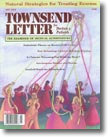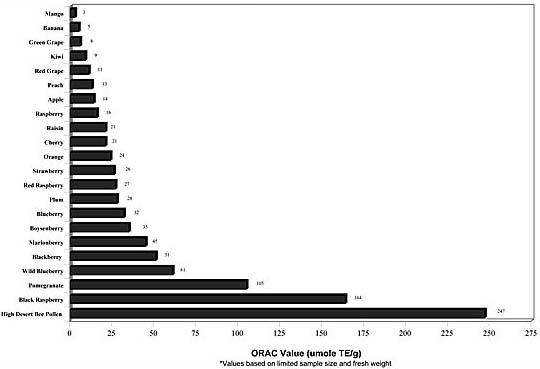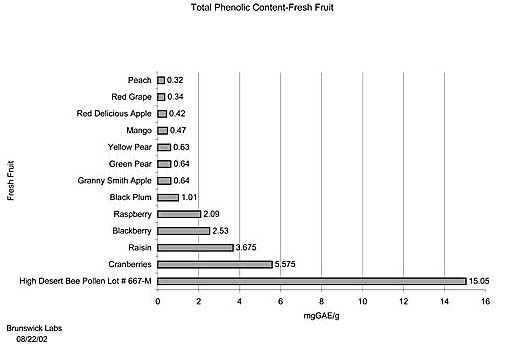


May 2003
Bee Pollen and Antioxidant Activity

Beehive products have been used since ancient times as dietary supplements because of their perceived health-promoting effects in the human body. In modern times, this perception — that beehive products promote health due to nutritionally beneficial compounds — has increasingly come under attack. The skepticism has been partially due to the lack of scientific studies examining the issue. Recently, new laboratory techniques have been developed that make it easier to study the beneficial effects and the nutritional make-up of natural substances. CC Pollen Co. has enthusiastically engaged in this process.
ORAC Tests
The Oxygen Radical Absorbance Capacity (ORAC) test is an emerging standard
by which science measures antioxidant activity in foods and natural supplements.
Antioxidants are important to protect the body's cells from damage
caused by free radicals (reactive oxygen species). Cell membranes are susceptible
to free radicals because they are largely composed of fatty acids (lipid
bi-layer). Poly-unsaturated fatty acids are particularly susceptible to free-radical-mediated
oxidation because of their unique structure. Cell membrane damage due to
oxidation of fatty acid membrane components (lipid peroxidation) can lead
to the disruption of the function and structure of whole cells. Furthermore,
for normal health it is important to maintain normal levels of lipid peroxidation
of lipoproteins.
Dietary antioxidants, or free radical-scavengers, may play a preventive role
in protecting a person's health. High levels of antioxidant activity,
as determined by ORAC, have been found to be present in blueberries and black
raspberries. When the ORAC scores of these berries became known, annual consumption
of those fruits increased dramatically. Berries became famous as the foods
possessing the most antioxidant activity of all the whole foods. The highest
ORAC scores for wild blueberries is listed at 61 ORAC units (umole TE/g). Black
raspberries scored higher at 164 ORAC units. (Download
a print-quality .pdf of the ORAC Comparison Chart.)

.
Polyphenol Quantification Tests
Certain laboratories are now also measuring the polyphenol content of foods
and supplements. Polyphenols are called aromatic compounds, and they are
biochemically characterized by the presence of six-carbon rings with an attached
hydroxy (OH) group, called phenols. A molecule that contains more than one
phenolic ring is called a polyphenol. Polyphenols, as a class of nutrients,
include bioflavonoids, organic acids, and phenolic acids. Most of the antioxidant
activity of a food is created by polyphenols. Polyphenols have been extensively
studied in regard to their antioxidant activity and health-promoting biological
activities. Generally, total polyphenol content is regarded as a measure
of the health-promoting qualities of a whole food.
Once again, CC Pollen Co. had its High Desert¨ Bee Pollen tested for total
polyphenol content, and the results were the highest polyphenol content of
any food yet tested, at 15.05 mg/g. The next highest reading was cranberries
at 5.575 mg/g. (Download a print-quality
.pdf of the Total Phenolic Comparison Chart.)

![]()
Correspondence:
CC Pollen Co.
3627 E. Indian School Rd., Suite 209
Phoenix, Arizona 85018 USA
602-957-0096
800-875-0096
Fax 602-381-3130
royden@earthlink.net
Search
our pre-2001 archives
for further information. Older issues of the printed magazine are also
indexed for your convenience.
1983-2001
indices ;
1999-Jan. 2003 indices
Once you find the magazines you'd like to order, please use our
convenient form, e-mail subscriptions@townsendletter.com,
or call 360.385.6021 (PST).
All rights reserved.
Web site by Sandy Hershelman Designs
